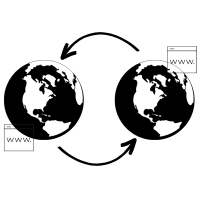Domain Management
Domain management is like being the mayor of a digital city. Just as a city needs addresses, roads, and security measures, your domain needs DNS records, security settings, and proper configuration. Whether you’re managing a single domain or a portfolio of domains, understanding domain management is crucial for maintaining a strong online presence.
The Impact of Domain Management
1. Online Identity
- Brand recognition
- Professional presence
- Trust and credibility
- Search engine visibility
2. Technical Infrastructure
- Website accessibility
- Email delivery
- Service routing
- Security implementation
3. Business Operations
- Brand protection
- Service availability
- Customer trust
- Market presence
Core Concepts
1. Domain Registration
Think of domain registration like buying property in the digital world:
- Domain names are like street addresses
- Registrars are like real estate agents
- DNS is like the city’s address book
# Example domain registration check
whois example.com
# Example DNS lookup
dig example.com
2. DNS Configuration
DNS configuration is like setting up a city’s directory service:
# Example DNS records
example.com. IN A 192.0.2.1
www.example.com. IN CNAME example.com.
mail.example.com. IN MX 10 mail.example.com.
example.com. IN TXT "v=spf1 include:_spf.example.com ~all"
3. Domain Security
Domain security is like having a security system for your digital property:
# Example SSL certificate generation
openssl req -new -newkey rsa:2048 -nodes \
-keyout example.com.key \
-out example.com.csr
# Example DNSSEC key generation
dnssec-keygen -a RSASHA256 -b 2048 -n ZONE example.com
Modern Domain Practices
1. Domain Management
- Centralized control
- Automated updates
- Regular audits
- Portfolio management
2. DNS Optimization
- Fast propagation
- Global distribution
- Load balancing
- Failover configuration
3. Security Implementation
- SSL/TLS certificates
- DNSSEC
- Domain locking
- WHOIS privacy
Best Practices
-
Registration
- Choose reputable registrars
- Enable auto-renewal
- Use strong passwords
- Enable two-factor authentication
-
Configuration
- Keep records updated
- Use appropriate TTLs
- Implement redundancy
- Monitor DNS health
-
Security
- Enable domain locking
- Use DNSSEC
- Implement SSL/TLS
- Regular security audits
-
Monitoring
- Track expiration dates
- Monitor DNS propagation
- Check SSL certificates
- Watch for unauthorized changes
Project Structure
domain-management/
├── config/
│ ├── dns/
│ │ ├── records.yaml
│ │ └── zones/
│ └── ssl/
│ ├── certificates/
│ └── keys/
├── scripts/
│ ├── dns-update.sh
│ └── ssl-renew.sh
├── docs/
│ └── domain-policy.md
└── README.md
Next Steps
Resources
Need Help?
If you need assistance with domain management, contact our support team for expert guidance.
